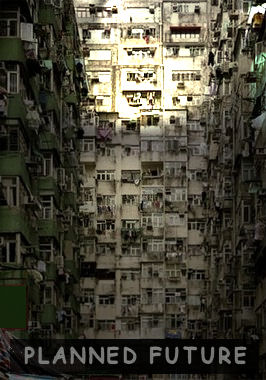We are being trapped by developers
 Infilling and land-use planning in Victoria are simply forcible enclosures: "Enclosure involves more than land and fences, and implies more than simply privatization or takeover by the state. It is a compound process which affects nature and culture, home and market, production and consumption, germination and harvest, birth, sickness and death. It is a process to which no aspect of life or culture is immune. People too are enclosed as they are fitted into a new society where they must sell their labour, learn clock-time, and accustom themselves to a life of production and consumption; groups of people are redefined as "populations", quantifiable entities whose size must be adjusted to take pressure off resources required for the global economy. Women are enclosed by consigning them to the "unproductive" periphery of a framework of industrial work, which they can only enter by adopting "masculine" values and ways of being, thinking and operating. Skills, too, are enclosed, as are systems of knowledge associated with local stewardship of nature."
Infilling and land-use planning in Victoria are simply forcible enclosures: "Enclosure involves more than land and fences, and implies more than simply privatization or takeover by the state. It is a compound process which affects nature and culture, home and market, production and consumption, germination and harvest, birth, sickness and death. It is a process to which no aspect of life or culture is immune. People too are enclosed as they are fitted into a new society where they must sell their labour, learn clock-time, and accustom themselves to a life of production and consumption; groups of people are redefined as "populations", quantifiable entities whose size must be adjusted to take pressure off resources required for the global economy. Women are enclosed by consigning them to the "unproductive" periphery of a framework of industrial work, which they can only enter by adopting "masculine" values and ways of being, thinking and operating. Skills, too, are enclosed, as are systems of knowledge associated with local stewardship of nature."

Infilling and land-use planning create real and spiritual cages for us
"Because history's best known examples of enclosure involved the fencing in of common pasture, enclosure is often reduced to a synonym for "expropriation." But enclosure involves more than land and fences, and implies more than simply privatization or takeover by the state. It is a compound process which affects nature and culture, home and market, production and consumption, germination and harvest, birth, sickness and death. It is a process to which no aspect of life or culture is immune.
"The Oxford English Dictionary offers a general definition of enclosure — to "insert within a frame". Enclosure tears people and their lands, forests, crafts, technologies and cosmologies out of the cultural frame-work in which they are embedded and forces them into a new frame¬ work which reflects and reinforces the values and interests of newly dominant groups. Any pieces which will not fit into the new framework are devalued and discarded. In the modern age, the architecture of this new framework is determined by market forces, science, state and corporate bureaucracies, patriarchal forms of social organization, and ideologies of environmental and social management.
Land, for example, once it is integrated into a framework of fences, roads and property laws, is "disembedded" from local fabrics of selfreliance and redefined as "property" or "real estate". Forests are divided into rigidly defined precincts — mining concessions, logging concessions, wildlife corridors and national parks — and transformed from providers of water, game, wood and vegetables into scarce exploitable economic resources. Today they are on the point of being enclosed still further as the dominant industrial culture seeks to convert them into yet another set of components of the industrial system, redefining them as "sinks" to absorb industrial carbon dioxide and as pools of "biodiversity". Air is being enclosed as economists seek to transform it into a marketable "waste sink"; and genetic material by subjecting it to laws which convert it into the "intellectual property" of private interests.
People too are enclosed as they are fitted into a new society where they must sell their labour, learn clock-time, and accustom themselves to a life of production and consumption; groups of people are redefined as "populations", quantifiable entities whose size must be adjusted to take pressure off resources required for the global economy. Women are enclosed by consigning them to the "unproductive" periphery of a framework of industrial work, which they can only enter by adopting "masculine" values and ways of being, thinking and operating. Skills, too, are enclosed, as are systems of knowledge associated with local stewardship of nature."
Extract from The Ecologist Vol. 22, No. 4, July/August 1992, at http://www.theecologist.org/back_archive/19701999/

Recent comments